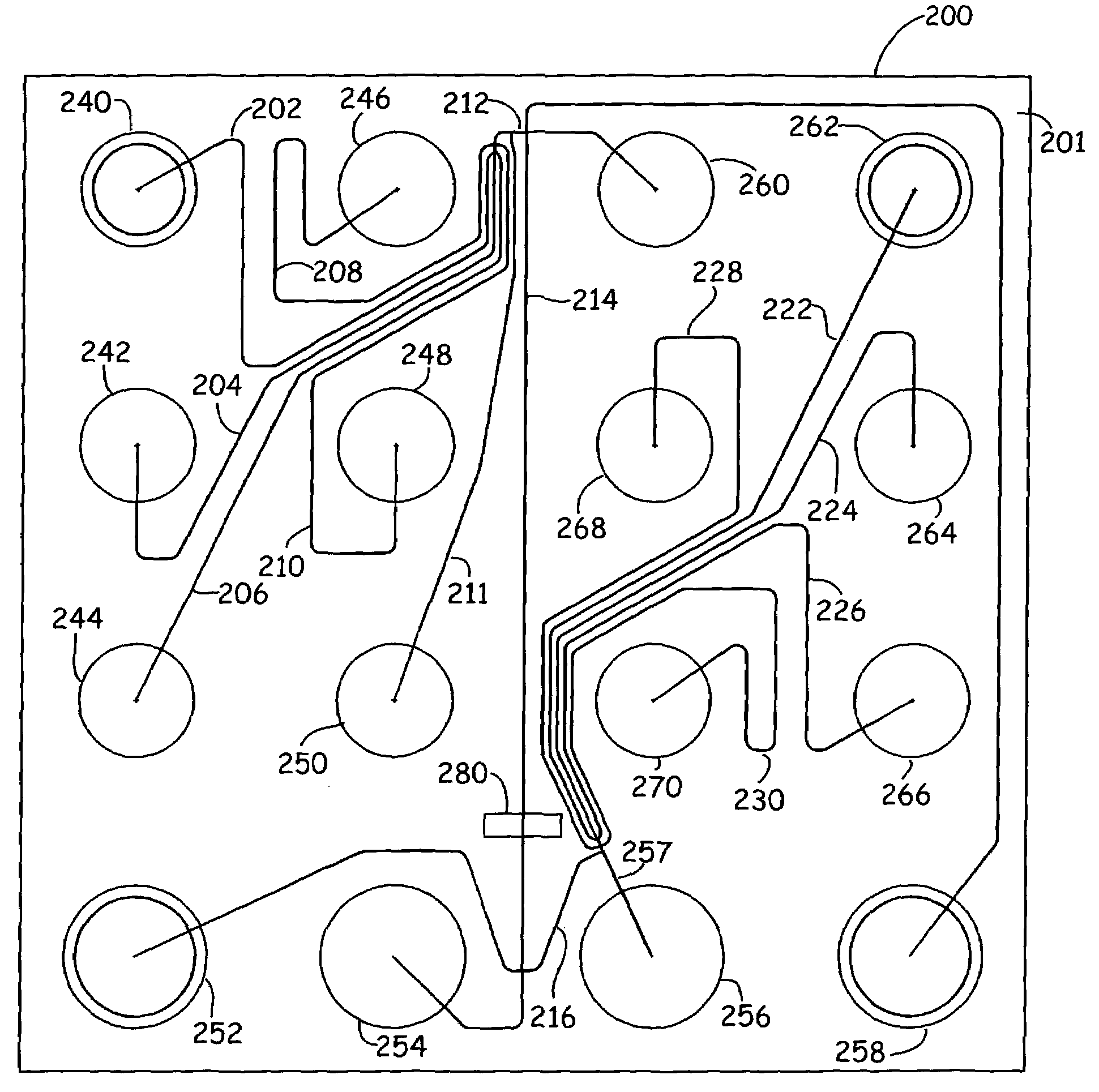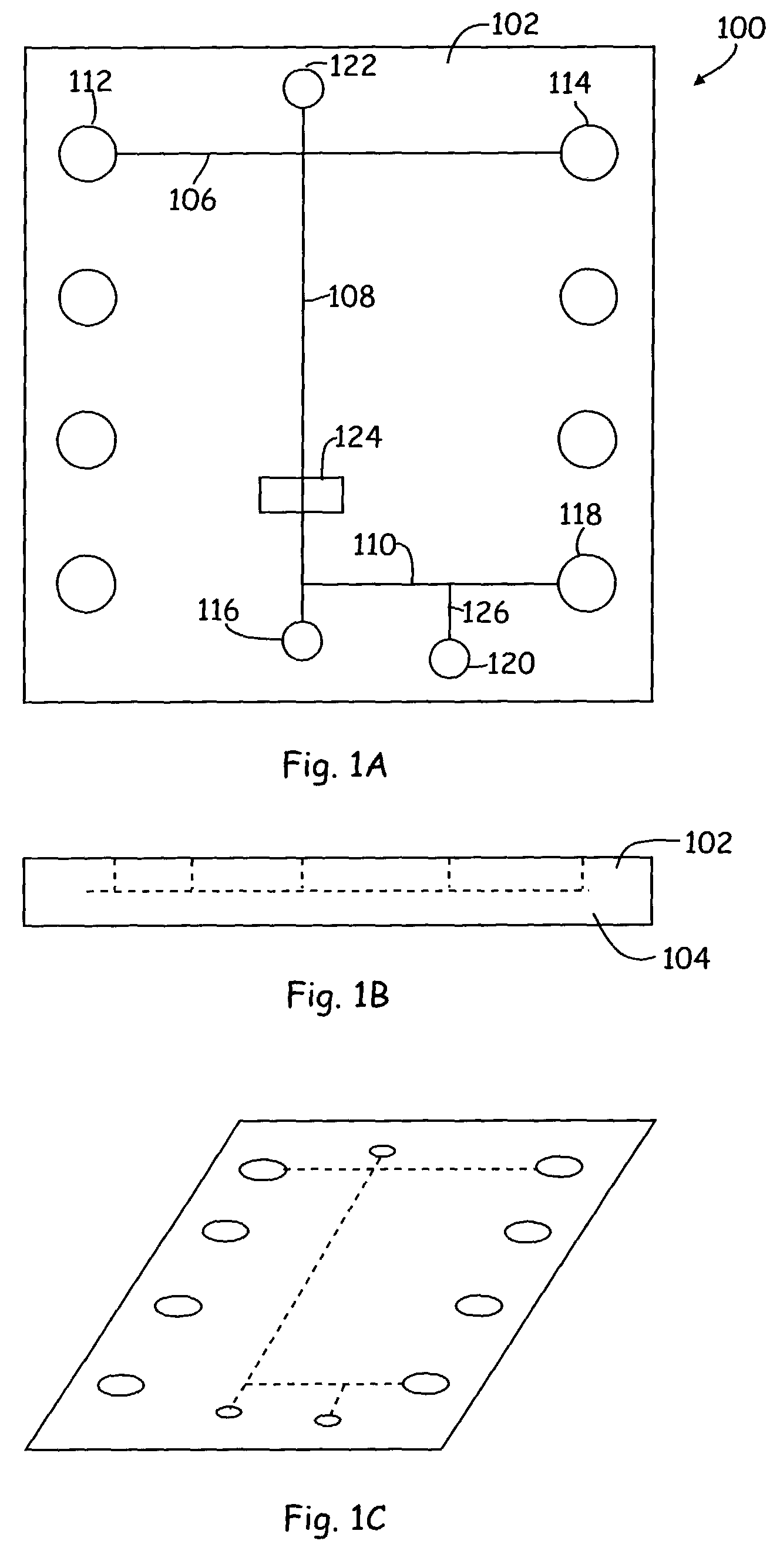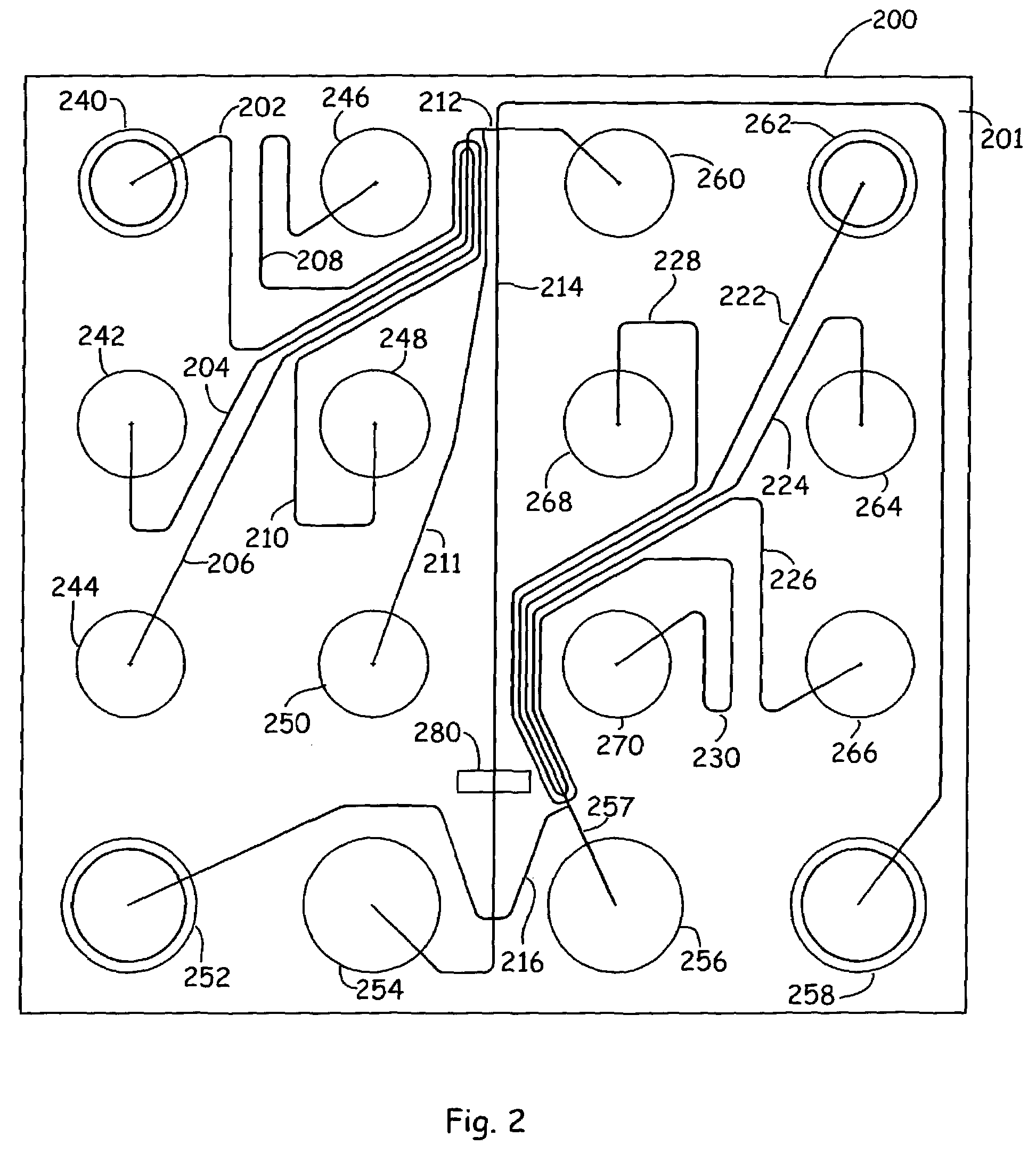Methods, systems and apparatus for separation and isolation of one or more sample components of a sample biological material
a biological material and sample technology, applied in the field of methods, systems and apparatuses for separation and isolation of one or more sample components of a sample biological material, can solve the problems of time-consuming, laborious, damaging the dna, etc., and achieve the effect of facilitating removal, reducing the potential impact of individual migration drift problems, and accurate size calibration of every run
- Summary
- Abstract
- Description
- Claims
- Application Information
AI Technical Summary
Benefits of technology
Problems solved by technology
Method used
Image
Examples
example 1
Serial Separations-Based Analysis and Isolation of Fragments of Known Size
[0070]The device shown in FIG. 2 was used to perform a number of serial DNA separations and isolation of selected DNA fragments of known size, to verify the capability of the system to operate effectively in isolating fragments of a given size. All reagents were taken from a DNA 7500 LabChip® kit, commercially available from Agilent Technologies. The separation medium included a mixture of a sieving polymer solution and DNA intercalating dye. Four DNA fragments (150, 300, 500, and 950 bases) were dissolved in a 1 / 100 dilution of DNA sample buffer in water (2 mM TAPS) with DNA flanking markers (40 pg / μl) and placed into each of the five sample loading reservoirs 240, 242, 244, 246, and 248, where each fragment was present at a concentration of 5 ng / μl. Because this Example was performed principally to validate the capability of the system to isolate fragments of known size / length, no DNA standard marker was use...
example 2
Isolation and Cloning of a 750 bp PCR Product Into a PCR II Vector Via TOPO Cloning
[0072]The following experiment was performed to illustrate the capability of the microfluidic device of FIG. 2 to separate and accurately isolate small quantities of DNA PCR fragments which were subsequently used in an off-chip cloning procedure, to verify that sufficient quantities of isolated PCR fragments could be collected using the methods and devices of the present invention and successfully used in cloning reactions.
Generation of a 750 bp DNA Product:
[0073]A control PCR fragment of 750 bp was synthesized using the components and procedure provided by the TOPO TA Cloning® kit from Invitrogen (Carlsbad, Calif.). After the PCR reaction, 1 μl of the 50 μl reaction mix was analyzed using a DNA 7500 LabChip® kit as described previously. The purified PCR product was found to have an average concentration of 7.6 ng / μl and the calculated MW is about 745 bp. The results of the analysis thus showed that t...
PUM
| Property | Measurement | Unit |
|---|---|---|
| length | aaaaa | aaaaa |
| concentrations | aaaaa | aaaaa |
| concentration | aaaaa | aaaaa |
Abstract
Description
Claims
Application Information
 Login to View More
Login to View More - R&D
- Intellectual Property
- Life Sciences
- Materials
- Tech Scout
- Unparalleled Data Quality
- Higher Quality Content
- 60% Fewer Hallucinations
Browse by: Latest US Patents, China's latest patents, Technical Efficacy Thesaurus, Application Domain, Technology Topic, Popular Technical Reports.
© 2025 PatSnap. All rights reserved.Legal|Privacy policy|Modern Slavery Act Transparency Statement|Sitemap|About US| Contact US: help@patsnap.com



